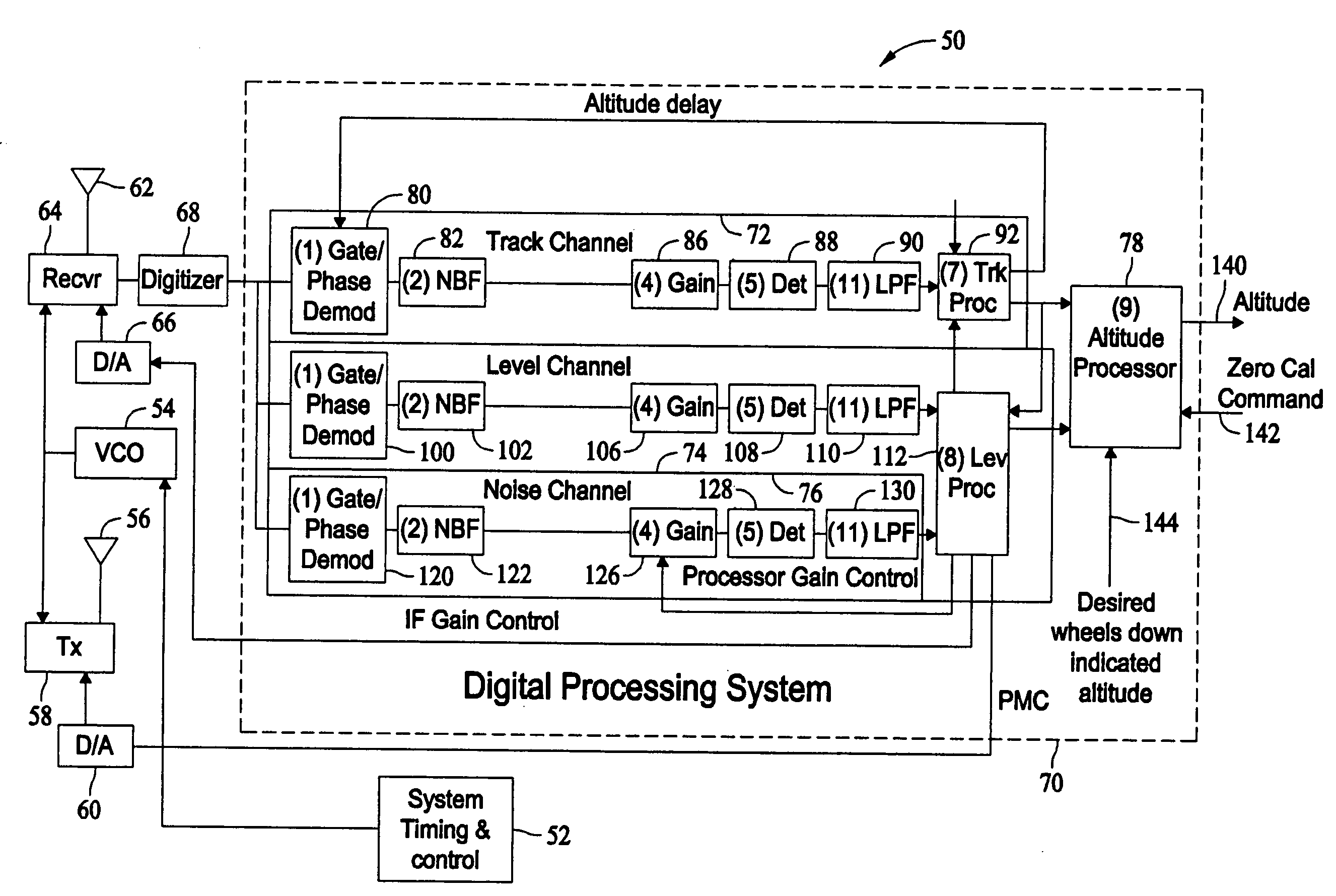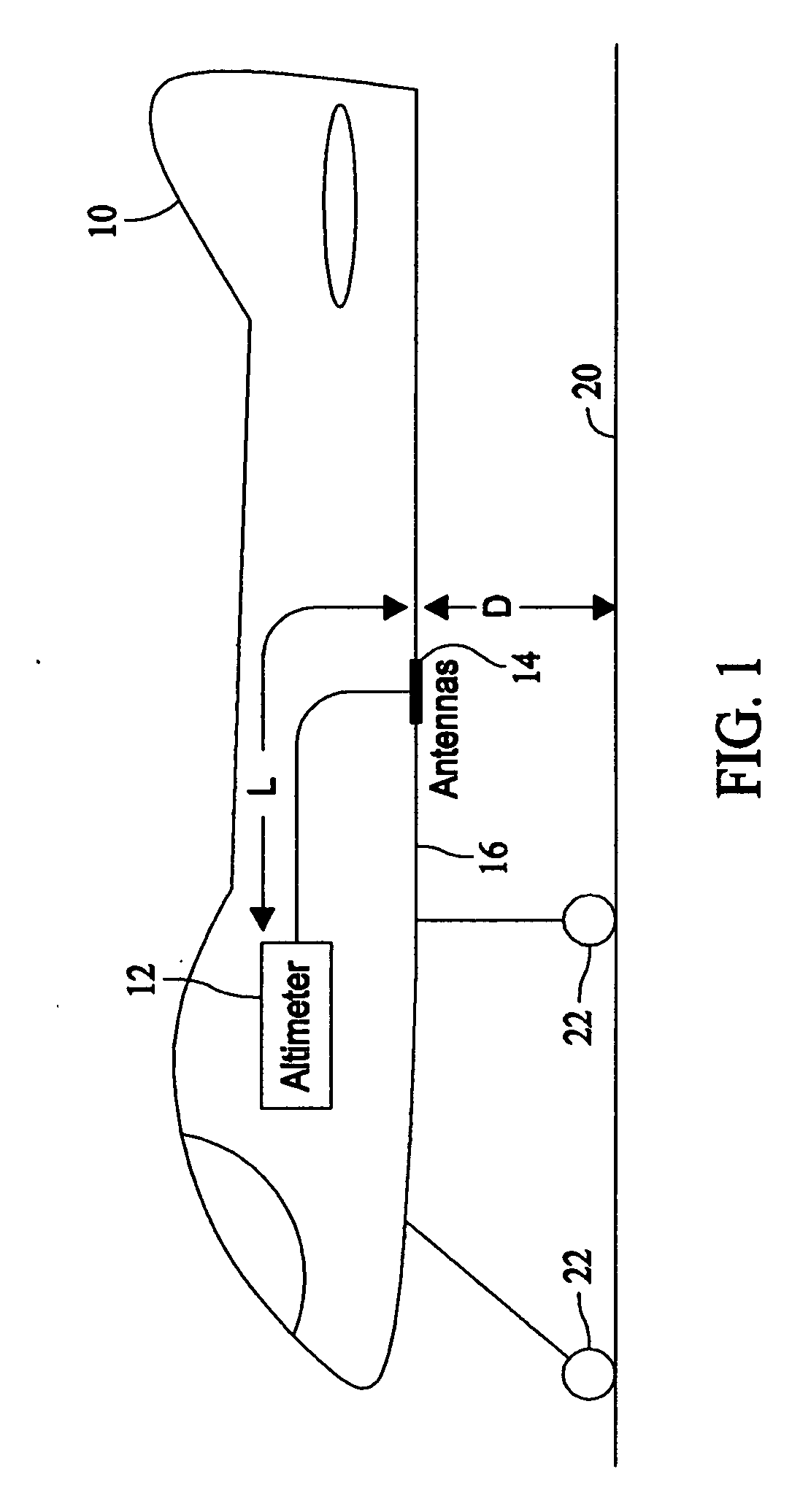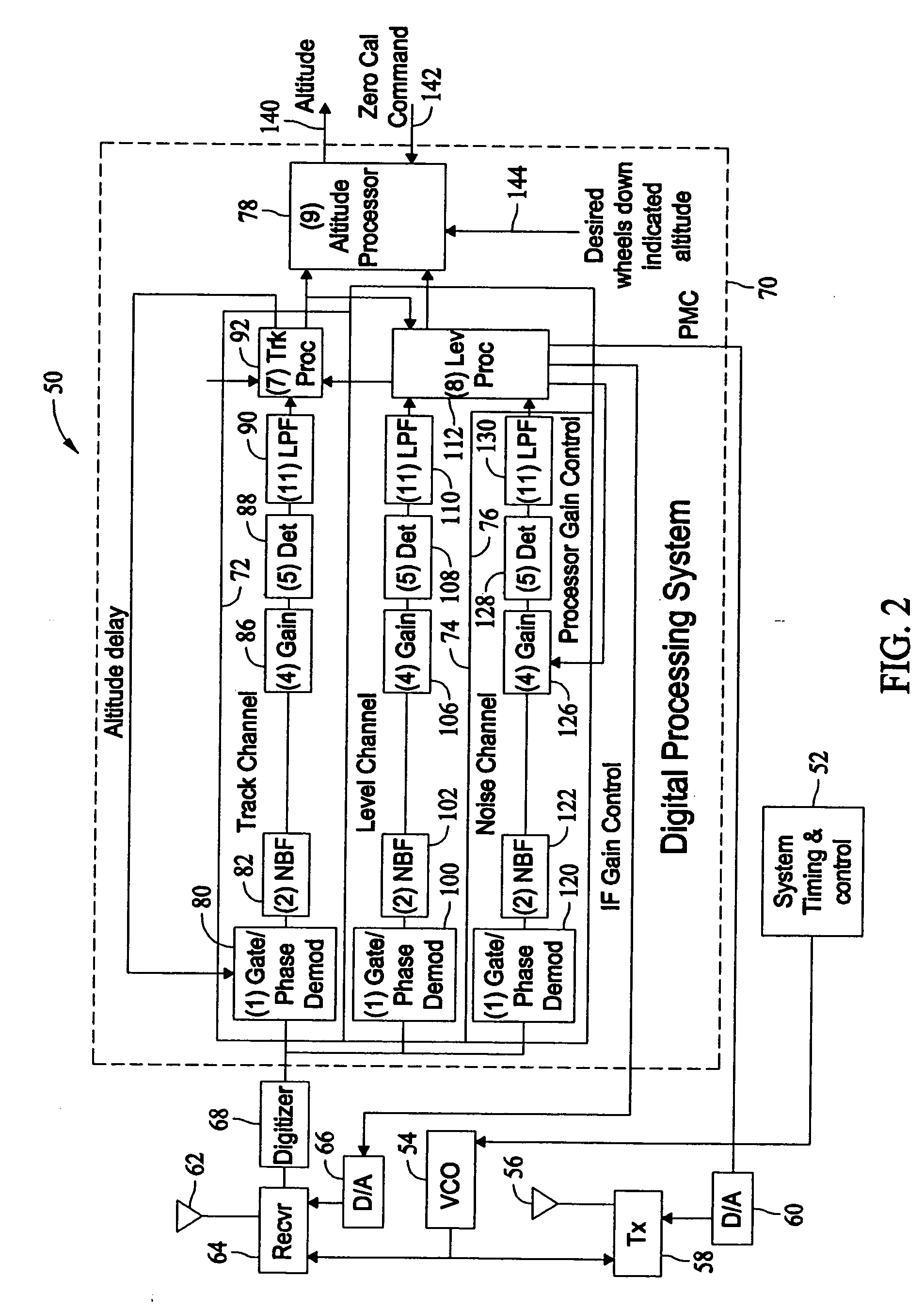Methods and systems for automatic zero calibration of radar altimeters
- Summary
- Abstract
- Description
- Claims
- Application Information
AI Technical Summary
Problems solved by technology
Method used
Image
Examples
Embodiment Construction
[0011]FIG. 1 is a diagram illustrating a typical radar altimeter installation within an air vehicle 10. Installed within aircraft 10 is a radar altimeter 12 which includes one or more antennas 14 that are mounted on a surface 16 of aircraft 10. Antennas 14 are a distance “L” from radar altimeter 12, and radar altimeters (e.g. radar altimeter 12) are typically calibrated to account for the delay in signal transmissions and receptions caused by the separation of radar altimeter 12 and antennas 14. Aircraft 10 is either parked on or taxiing along ground 20 as landing gears 22 are touching ground 20. As illustrated by FIG. 1, although aircraft 10 has a zero altitude (e.g., aircraft is on ground 20), antennas 14 of radar altimeter 12 are a distance “D” from ground 20. Absent any type of calibration, radar altimeter 12 will output an altitude reading of “D”, assuming the distance “L” has been previously taken into account, even though aircraft 10 is on ground 20. Although “D” varies with ...
PUM
 Login to View More
Login to View More Abstract
Description
Claims
Application Information
 Login to View More
Login to View More - R&D Engineer
- R&D Manager
- IP Professional
- Industry Leading Data Capabilities
- Powerful AI technology
- Patent DNA Extraction
Browse by: Latest US Patents, China's latest patents, Technical Efficacy Thesaurus, Application Domain, Technology Topic, Popular Technical Reports.
© 2024 PatSnap. All rights reserved.Legal|Privacy policy|Modern Slavery Act Transparency Statement|Sitemap|About US| Contact US: help@patsnap.com










